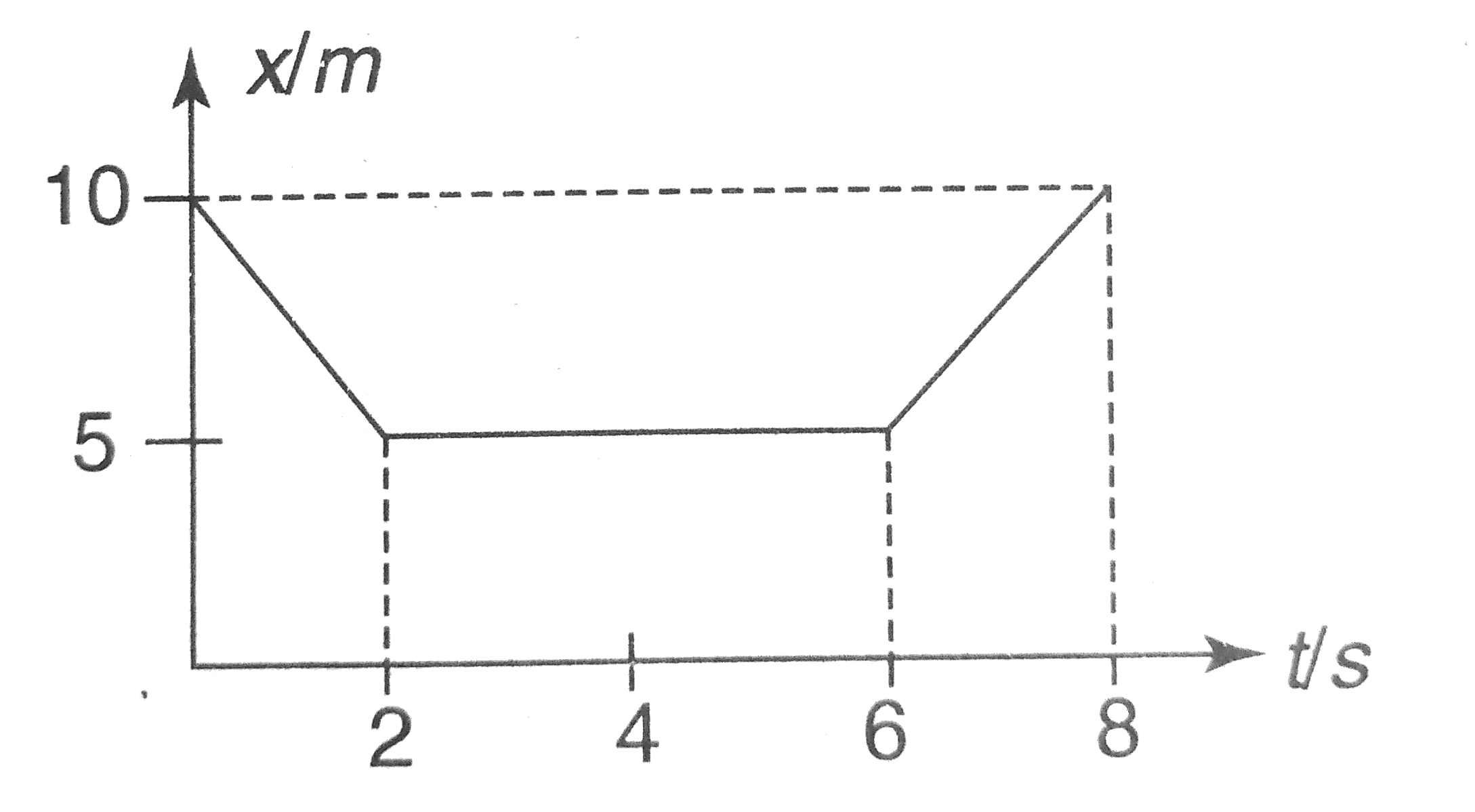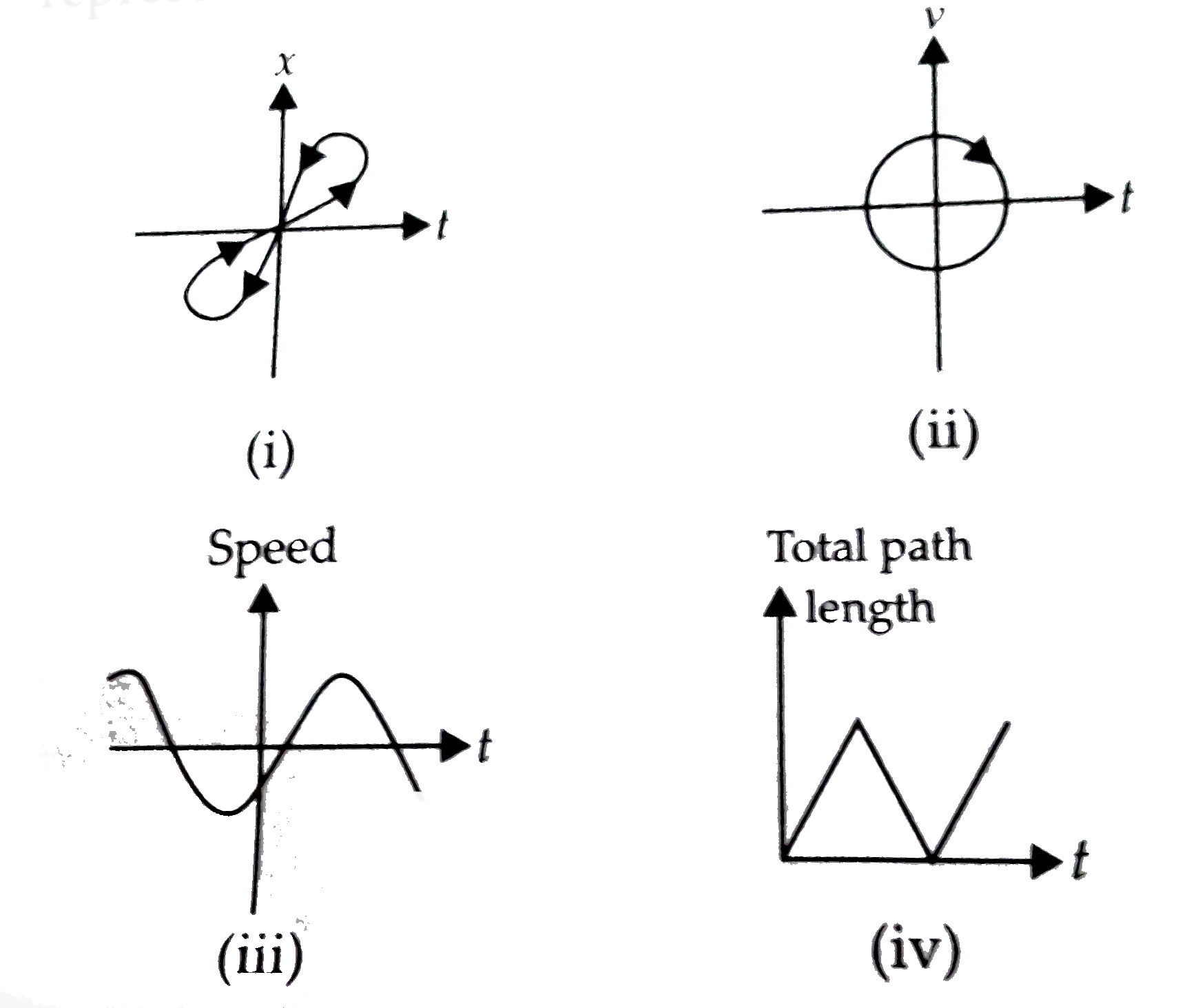Statement-I : Graph (1) represent one dimensional motion of a particle. While graph (2) can not represent 1-D motion of the particle. (here x is position and t is time)

Statement-II : Particle can have only one position at an instant.Solution in Gujrati
If both assertion & Reason are True & the Reason is a corrrect explanation of the Asserion.
If both Assertion & Reason are True but Reason is not correct explanation of the Assertion.
If Assertion is Trie but the Reason is False.
If both Assertion & Reason are false
The correct Answer is:A
Step by step video & image solution for Statement-I : Graph (1) represent one dimensional motion of a particle. While graph (2) can not represent 1-D motion of the particle. (here x is position and t is time) Statement-II : Particle can have only one position at an instant. by Physics experts to help you in doubts & scoring excellent marks in Class 12 exams.
Updated on:21/07/2023Topper's Solved these Questions
- MOTION IN A PALNEBOOK - ALLEN CHAPTER - MOTION IN A PALNEEXERCISE - SOLVED EXAMPLE
28 Videos
- MOTION IN A PALNEBOOK - ALLEN CHAPTER - MOTION IN A PALNEEXERCISE - EXERCISE-2
170 Videos
- KINEMATICS-2DBOOK - ALLEN CHAPTER - KINEMATICS-2DEXERCISE - Exercise (O-2)
47 Videos
- NEWTON'S LAWS OF MOTION & FRICTIONBOOK - ALLEN CHAPTER - NEWTON'S LAWS OF MOTION & FRICTIONEXERCISE - EXERCISE (JA)
4 Videos
Similar Questions
A particle thrown over a triangle from one end of a horizontal base falls on the other end of the base after grazing the vertex. If αandβ are the base angles of triangle and angle of projection is θ, then prove that (tanθ=tanα+tanβ)
View SolutionThe velocity of a particle moving with constant acceleration at an instant t0 is 10m/s After 5 seconds of that instant the velocity of the particle is 20m/s. The velocity at 3 second before t0 is:-
View SolutionA particle is moving in xy-plane .At certain instant the components of its velocity and acceleration are as follows ux=3m/s,uy=4m/s,ax=2m/s2anday=1m/s2. The rate of change of speed at this moment is
View SolutionA piece of wire is bent in the shape of a parabola y=kx2 (y-axis vertical) with a bead of mass m on it. The bead can slide on the wire without friction. It stays at the lowest point of the parabola when the wire is at rest. The wire is now accelerated parallel to the x-axis with a constant acceleration a. The distance of the new equilibrium position of the bead, where the bead can stay at rest with respect to the wire, from the y-axis is:
View SolutionFigure shows the position the graph for a particle in one dimensional motion. Which of the graphs in fugure represent the variation in the velocity of the particle with time ?
View SolutionFigure shows the position time graph for a particle in one dimensional motion. What is the displacement of the particle in first 4 seconds ?

View SolutionWhich of the following graphs cannot possibly represent one dimensional motion of a particle. .
View SolutionStatement-I : Graph (1) represent one dimensional motion of a particle. While graph (2) can not represent 1-D motion of the particle. (here x is position and t is time)

Statement-II : Particle can have only one position at an instant.
View SolutionWhich of the following graphs cannot represent one dimensional motion of a particle?
View SolutionIn the one-dimensional motion of a particle, the relation between position x and time t is given by x2+2x=t (here x>0). Choose the correct statement.
View SolutionWhich of the following graphs cannot possibly represent one dimensional motion of a particle?

View SolutionFigure below shows the velocity-time graph of a one dimensional motion. Which of the following characteristic of the particle is represented by the shaded area?

View SolutionRepresent uniform motion of a particle on a x - t graph.
View SolutionRepresent uniform decelerated motion of a particle on an a-t graph.
View SolutionWhich of the velocity-time (v - 1) graphs shown in figure can possibly represent one-dimensional motion of a particle? (A) (B)
View SolutionWhich one of the following displacement-time graphs represents one dimensional motion of a particle?
View Solution
